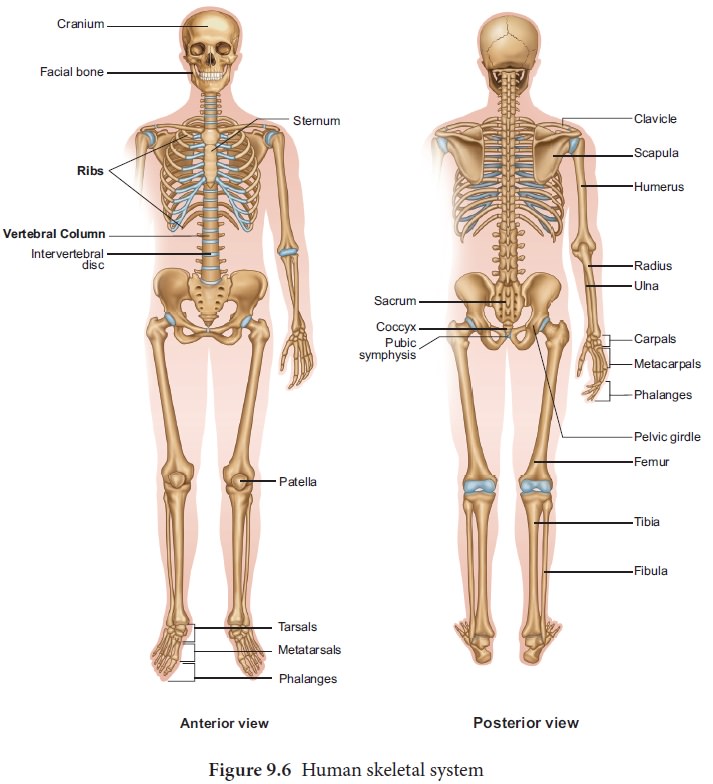Chapter: 11th Zoology : Chapter 9 : Locomotion and Movement
Skeletal system and its function
Skeletal system and its function
The skeletal system is constituted by a framework of bones and cartilages. It is derived from the embryonic mesoderm. Muscles are attached to the bones by means of tendons and provide the necessary force required for the bones of the skeleton to operate as levers. There are three types of skeletal systems. They are,
Hydrostatic
skeleton, which is found in soft-bodied invertebrates. It is a fluid filled-cavity
encircled by muscles (e.g. Earth worm).
Exoskeleton,
which is
found in invertebrates. It is a rigid hard case present outside the body of animals (e.g. Cockroach).
Endoskeleton,
which is
found inside the body of vertebrates. It is composed of bones and cartilages, surrounded by muscles.
(eg. Human being).
In human beings, the skeletal system is made up of
206 bones and cartilages. It is grouped into two principal divisions – the axial skeleton and the appendicular skeleton. The axial skeleton consists of 80 bones and the
appendicular skeleton consists of
126 bones (Figure 9.6 and Table.1).


Functions of skeletal system
• Support –It forms a rigid framework and
supports the weight of the body
against gravity.
• Shape - It provides and maintains
the shape of the body.
• Protection – It
protects the delicate internal organs of the body.
• Acts as
reservoir – It stores minerals such as
calcium and phosphate. Fat
(Triglyceride) is stored in yellow bone marrow and represents a source of
stored energy for the body.
• Locomotion – It acts
as lever along with the muscles attached to it.
• Strength – It can
withstand heavy weight and absorbs mechanical shock.
• As a
haemopoietic tissue – Red and White blood cells are
produced in the bone
marrow of the ribs, spongy bones of vertebrae and extremities of long bones.
Related Topics